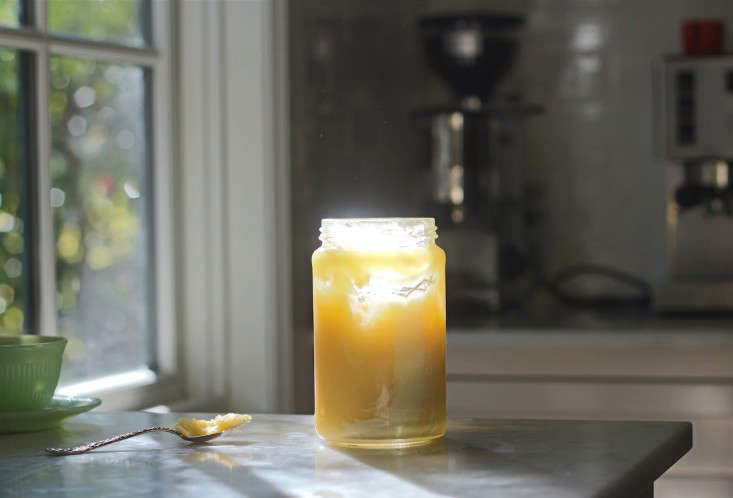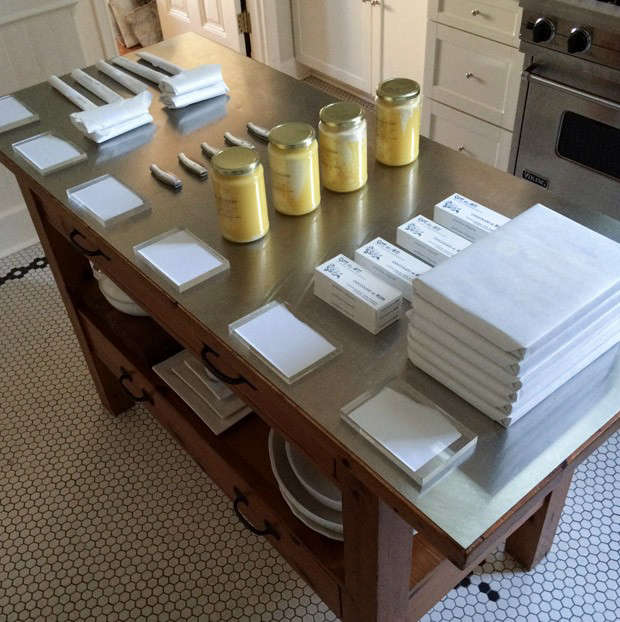It was my husband’s idea to buy the $75 jar of honey. My philosophy on such extravagances is always to say yes (it distracts him from how much I spend on shoes).
My husband saw the honey while we were wandering the aisles at the recent Remodelista Market in San Francisco, where 101 Cookbooks blogger Heidi Swanson had set up a table to sell her Quitokeeto collection of kitchen tools, cookbooks and–enormous jars of the most beautiful, marbled honey in the world.
The sunlight caught the honey, which had fractal streaks of whiteness clinging to the jar. My husband stopped, and a look came over his face last seen on Winnie the Pooh. He started to behave disturbingly like the little bear, kind of shuffling his feet and rubbing his hands together. When Swanson offered him a sniff, I had to wrench it from his hands for fear he’d get his head stuck inside the jar.
“It smells like flowers and lemon and the sea,” he reported.
We paid cash.
Photographs by Michelle Slatalla except where noted.
Above: A 2.2-pound jar of Classe Ouvrií¨re Miel Brut du Printemps is $75 from Quitokeeto.
What’s so special about this honey? “It is a rare, raw, seasonal honey produced strictly in the springtime by bee colonies kept by the Trigaux and Potvin families near the Canadian Gaspe coastline,” says Swanson.
But really, it’s the way it looks and the way it tastes. You might think that a jar of honey this big would last a long time. Of course “long” is a relative term when you live with a kindly bear. We’ve had the Classe Ouvrií¨re Miel Brut du Printemps for a month now, and have made a substantial dent.
Above: Photograph by Heidi Swanson.
Here’s what lured him: the jars of honey in an irresistible row.
Honey lovers, unite: try our recipe for Rose Petal Honey.
Above: We eat the honey on oatmeal and on toast and in salad dressing and in steaming hot mugs of black Ceylon tea. The honey is solid and waxy, and we have to dig it out of the jar with spoons. This heightens it.
What will we do when the honey runs out?
It turns out Honey Bear-ism runs in my husband’s family. My brother-in-law Seth scored a jerry can of African honey brought from Mali by a friend. It’s altogether different honey, made by bees that feast on shea trees. It’s brown and runny and tastes like grainy molasses. So we’ll get by.
Another way to eat it: see our recipe for Garlic Honey for Fending Off Germs.
















Have a Question or Comment About This Post?
Join the conversation (4)